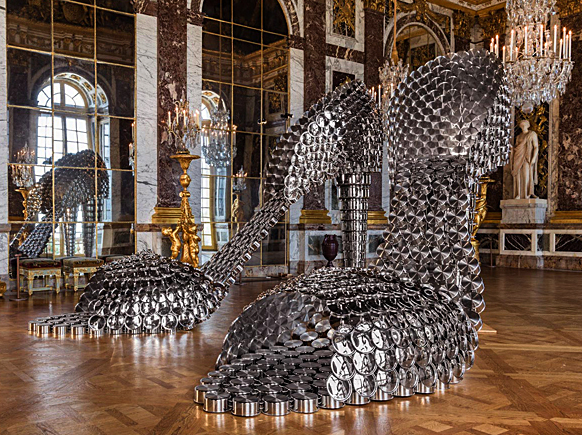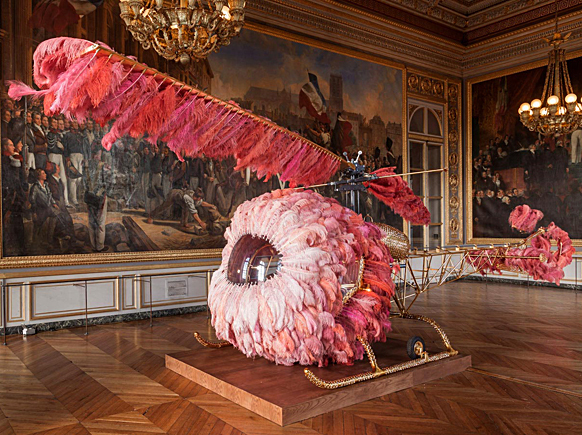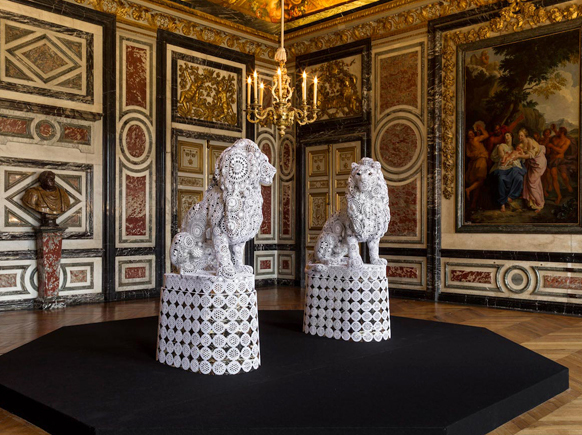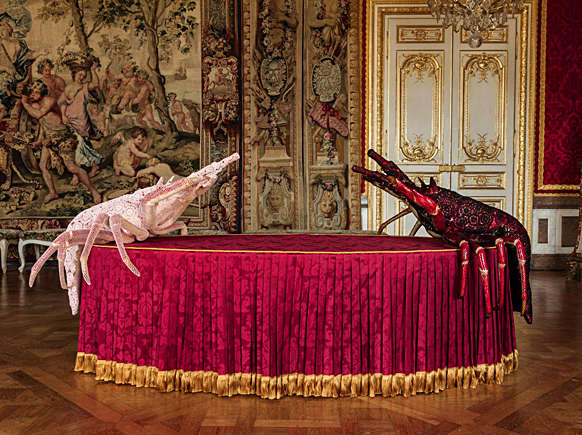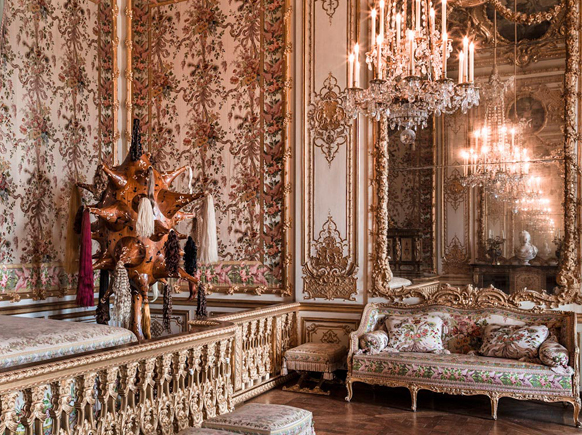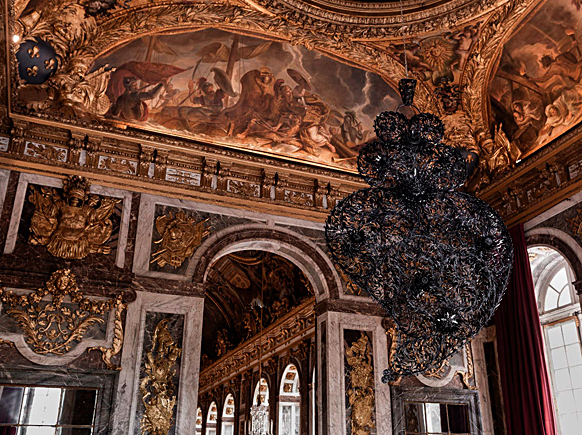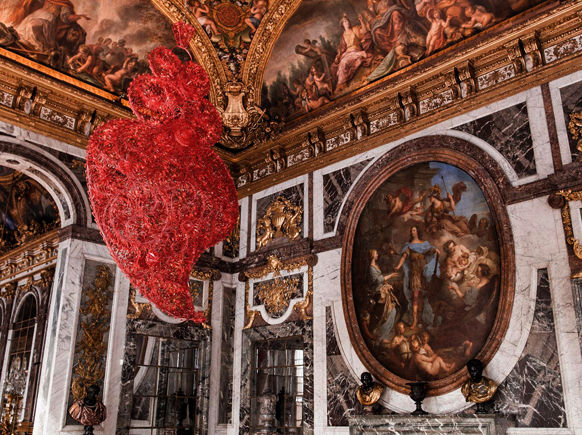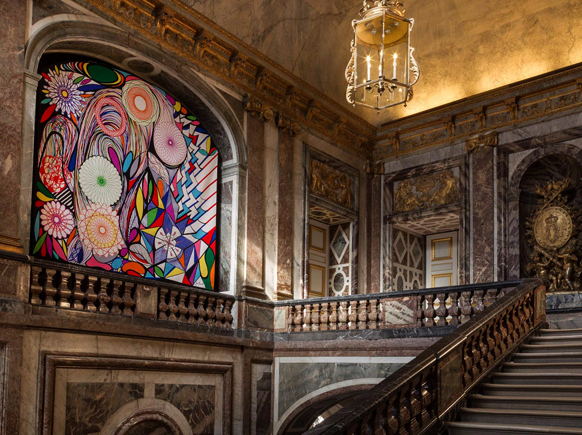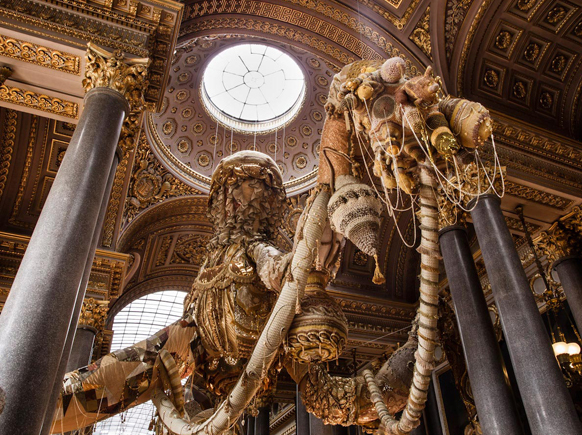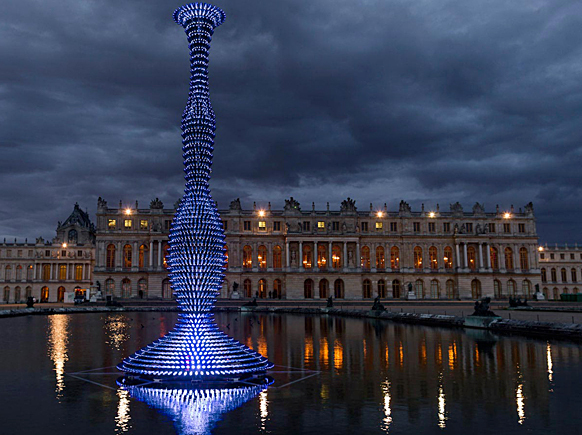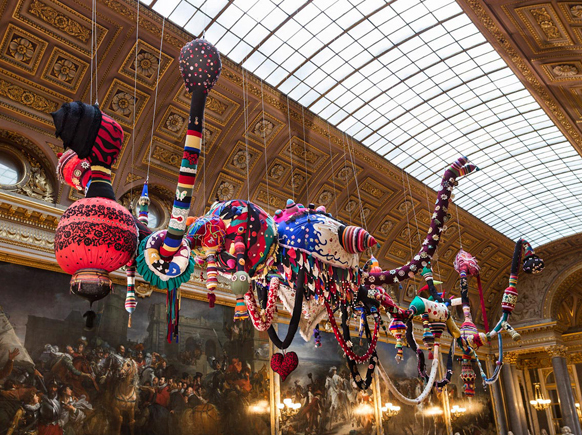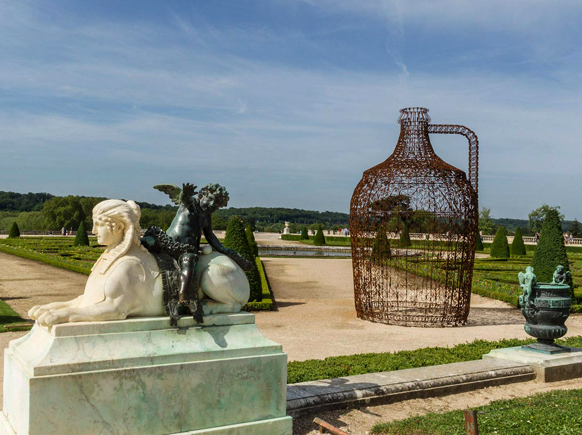Missing la pointure?
The art of spectacle is hardly new at Versailles. But, since 2008, the Château has augmented its laser displays and re-enactment “balls” with art interventions. Jeff Koons imported balloon dogs and sex toys, Takashi Murakami contributed cartoony sculpture. Now the first female invitée, Joanna Vasconcelos, has planted giant stilettos made from saucepans.
Copied from a pair owned by Marilyn Monroe, these heels are given pride of place in the Hall of Mirrors. Other manifestations of the Vasconcelos ethic include giant, hanging hearts made out of plastic cutlery and a gold-leafed helicopter festooned with ostrich plumes. All them are being presented as feminist works, with artisan roots in Vasconcelos’ Portuguese heritage. (There is a black heart to match the red one, and both sway to the strains of tragic fado ).
Although Spain or Austria could have been different, a Portuguese heritage holds no special resonance here. Like the earlier works, this is just elaborate theatre. As for feminism, aside from all the lace and feathers, it resides in the artist’s empathy with Marie Antoinette. “When I stroll through the rooms of the palace and its gardens, I feel the energy of a setting that gravitates between reality and dreams, the everyday and magic, the festive and the tragic. I can still hear the echo of the footsteps of Marie Antoinette and the music and festive ambiance of the stately rooms. How would the life of Versailles look if this exuberant and grandiose universe was transferred to our period?”
Given the scale and marketing of these art outings, it already has been. Not to mention that criticism is as interdit as it was under any king. The show has been met with chummy babble about luxury and recycling, to which Vasconcelos adds few insights. Her gilded helicopter, for instance, was “inspired by” Prince Andrew’s recent London wedding. Yet…”It is a time machine that transports the Queen [Marie Antoinette] into contemporaneity.” All of the artist’s statements sound like this, as if cut and pasted from some giddy design blog.
It leaves one to wonder, just what is it about Marie Antoinette? The infamous biopic by Sofia Coppola was also given extraordinary freedom here. Yet it ended up with less than nothing to say about history, France, decadence, royalty, power, fashion or revolution. It was in sync with only one mentality – the faith that anything can be made part of one’s personal universe. Just like Vasconcelos at Versailles, it traded in the same 2-D homage that flourishes on Facebook, Twitter and Instagram.
Coppola reduced epic melodrama – and the lives it affected – to hipster jokes and eye candy. Five years later, coming from the heart of art marketing, Vasconcelos has the same idea. Her oversize teapots, crocheted doilies and tapestry hangings are a Pinterest-level photo op.
Ironic, of course, that this elevation of “pretty” is hosted where frivolity used to come with consequences. But what you see is simply what you get; here, there is no more than striking juxtapositions. Once again, Versailles is reduced to an exotic backdrop. The only difference: this visions is XXL, not XIV.
• When it comes to Louis XIV, Louis XV, Louis XVI or Marie Antoinette, Versailles has always been a font of obsession. But Marie Antoinette owes many of her Anglophone fans to Lady Antonia Fraser’s 2001 biography. It offers a vivid portrait, albeit one in which sympathy outweighs scholarship.
• Less one-sided, and livelier, is Patrice Leconte’s 1995 film Ridicule. A portrait of Versailles in 1780 with much to say about the role of wit in French, then and now.
• When it comes whether or not we can “understand” inhabitants of the 18th century, one of the best arguments is Robert Darnton’s famous essay The Great Cat Massacre.
• Take yourself on a virtual tour of the installations.


